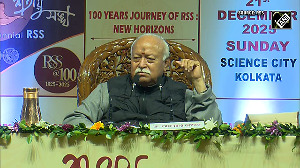India's ambitious attempt to flight-test its indigenous cryogenic engine on Thursday received a setback as the homegrown rocket Geosynchronous Satellite Launch Vehicle (GSLV-D3) deviated from path within seconds of lift-off.
As the GSLV-D3 soared into the sky from the Satish Dhawan spaceport in Sriharikota, it veered off from its flightpath and lost contact with the mission control.
"We stopped receiving data from GSLV-D3 505 seconds after its lift-off," ISRO officials said.
Indian Space Research Organisation Chairman K Radhakrishnan said GSLV-D3 mission objectives were not met fully. Officials said two engines in the cryogenic stage did not ignite and give the necessary control force to the rocket.
However, K Radhakrishnan assured the country that a successful completion of the GLSV-D3 project will be done within a year.
The cryogenic engine was crucial for putting communication satellites weighing more than two tonnes into geosynchronous transfer orbit (GTO).
The rocket was 49 meters tall and weighs 419 tonnes. The rocket was carrying communication satellite GSAT-4 and others weighing more than two tonnes.
This was the first Indian attempt to indigenously built cryogenic stage and technology, which is crucial to put communication satellites weighing more than two tonnes in GTO.
With inputs from PTI





